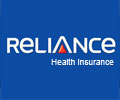About
Another synonym for HL 7 standards is Health Level 7. Health Level 7 is ANSI (American National Standards Institute) accredited organization for the development of health information standards, with its headquarters in USA. It is an all-volunteer, not-for-profit organization for development of international healthcare standards.
The main idea behind evolution of HL7 standards is for creation of a framework which constitutes exchange, integration, sharing and retrieval of electronic health records all on a single platform, thereby significantly reducing the expenses incurred towards healthcare management. Repetitions of expensive and unnecessary diagnostic procedures are avoided to a great extent. As a resultant, it is beneficial for the economies across the globe with a definite impact on the financial health of a country. Expenses incurred on bleeding sectors of an economy such as healthcare can be minimized to a great extent. HL7 addresses the concerns of healthcare organizations, health professionals and healthcare software suppliers across the globe. HL7's current membership which exceeds more than 2300 includes approximately 500 corporate members that represent more than 90% of the information systems vendors related to healthcare. There are certain specific standards initiated, developed and implemented by the organization viz. HL7 v2.x, v3.0, HL7 RIM etc. Version 2.x messaging standards are used not only in USA but also worldwide typically between information systems inside the same hospital, between hospitals and external laboratories and diagnostic centres. Version 2.x commonly supports clinical practice, healthcare management, delivery and evaluation of health services that are in common usage in healthcare sector across the globe.
Specifications for application level messaging between HIS (Health Information Systems) including areas such as clinical documentation and DSS (Decision Support System) are developed by HL 7.
What is HL7?
- It is an international organization responsible for development and adherence to international set of standards established more than 20 years ago.
- It ensures interoperability of data pertaining to healthcare.
- Setting of standards for exchange, integration and management of electronic healthcare information.
- Development of specifications for exchange of key sets of administrative and clinical data.









